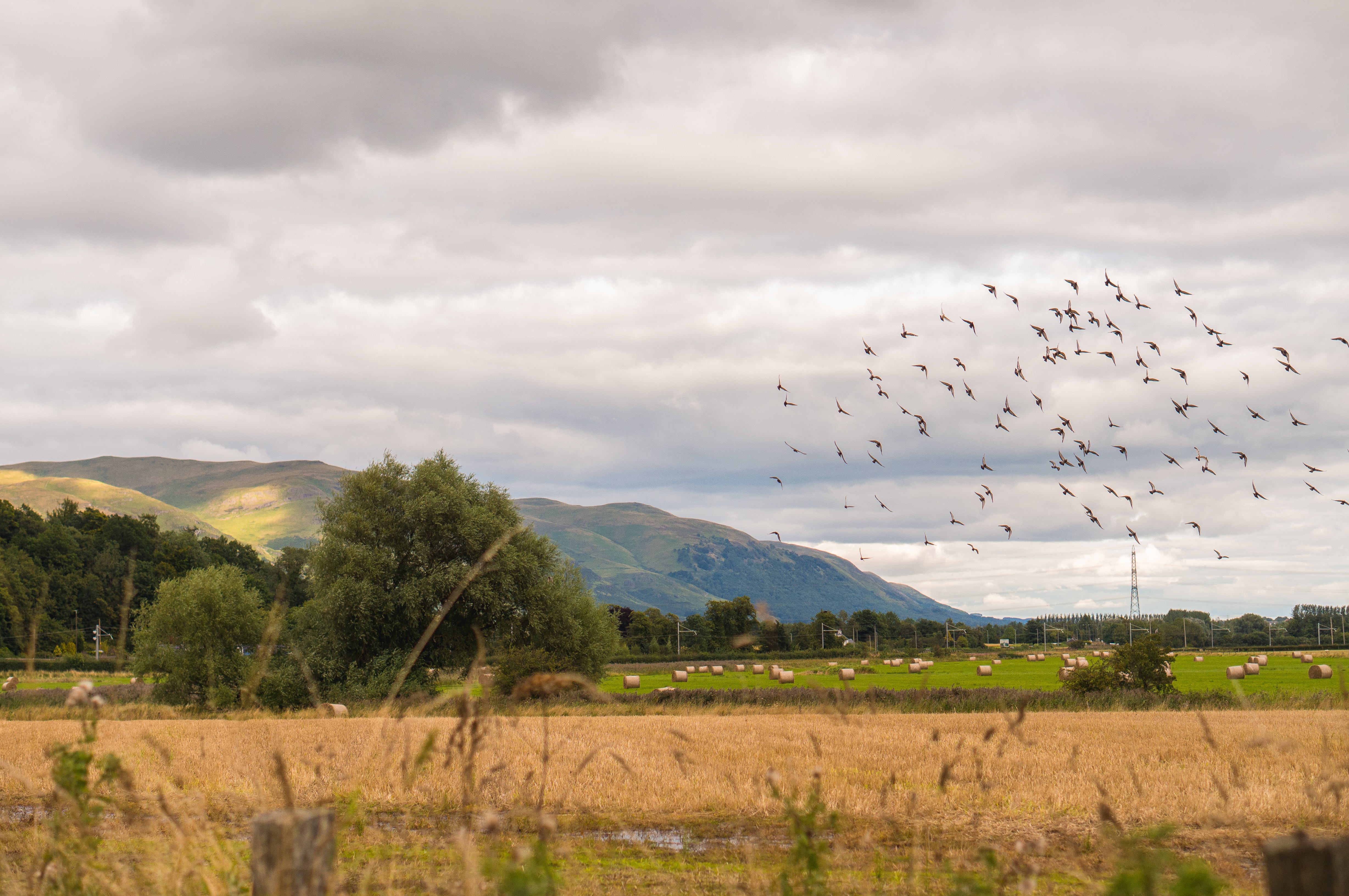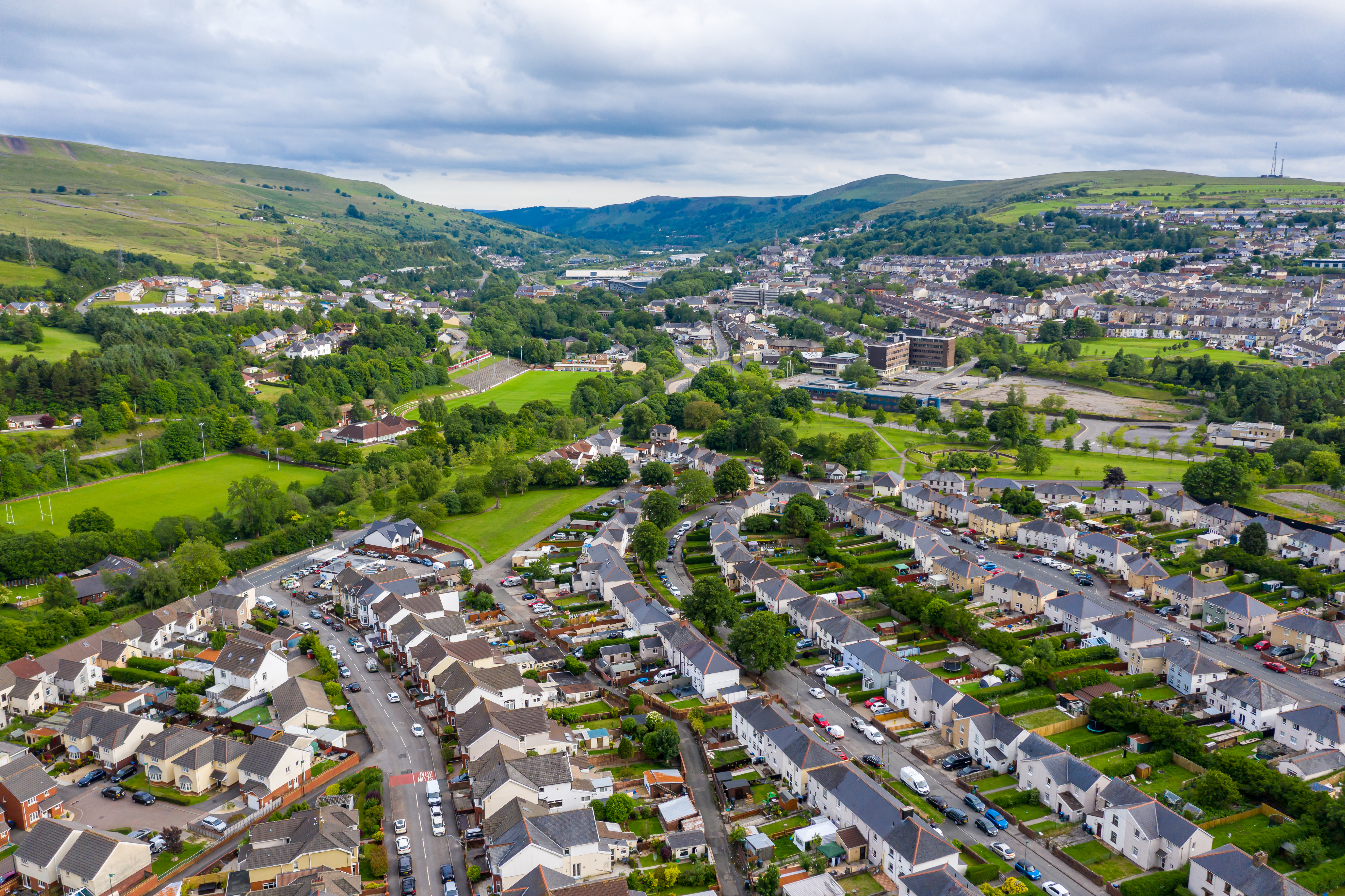Georgie Barber of the Food, Farming and Countryside Commission puts forward the case for Land Use Frameworks as a vital tool for meeting climate, nature, food and health challenges, and considers the features that determine their success.

People are increasingly recognising the interconnectedness of climate change, biodiversity loss, food systems, health crises and economic inequality. Since the Russian invasion of Ukraine in February 2022, and the accompanying food price spikes, food security has jumped in prominence in the media and government discussion - a prominence likely to continue as the cost-of-living crisis wears on and climate impacts worsen.
Awareness of these crises and the scale of the challenges they present has citizens, businesses, civil society and governments seeking to set ambitious but achievable targets and to create structures and paths to meet those targets (and so far, struggling to meet them). The UK government has recently set the following:
- Net Zero greenhouse gas emissions by 20501
- Planting 30,000 hectares of trees per year until 20252
- Reversing biodiversity loss by 2030, and protecting 30% of land and sea for nature3
- Building 300,000 new homes4 (which later became ‘non-mandatory’5 )
- Increasing renewable energy supply to decarbonise the power sector by 20356 .
Many brilliant people – across public, private and third sectors – are working hard to achieve these targets, and we have seen progress. Nonetheless there is one significant limit to meeting both our targets and the wider challenges, and that is the availability of land. The solutions for all these challenges require land. As each target is conceived separately from the others, the need for more land balloons: the Royal Society’s Multifunctional Landscapes report estimates that the UK would need additional land twice the size of Wales to meet all these targets. Land is a finite resource: the ambition of our targets is important, but ultimately futile if we do not have the means to achieve them.

A countryside landscape under grey clouds with a flock of birds flying and steep hills in the background. Photo by baeilis garvey via Unsplash.
Decision making for multifunctional landscapes
Clearly, we need to come up with a better way to use land as effectively and efficiently as possible. For this reason, researchers and policy experts are coalescing around encouraging multifunctionality – the ability for land to perform many roles and functions at the same time – as a necessary step to a prosperous future. Land can do many things at once: generate renewable energy and produce food, increase biodiversity and support new houses, sequester carbon and increase flood resilience. As roughly 70% of the UK is farmland, how agricultural land is used is critical. Using the limited land to its best ability and advantage is the best hope we have to create these many solutions. Multifunctionality should also reduce the polarisation of politics: while trade-offs are sometimes unavoidable, we can also maximise synergies so we don’t have to choose between, for example, rewilding or farming. We can in some areas produce food and increase biodiversity together, and hopefully drive consensus and action on both. (For a discussion of the trade-offs in farming and rewilding, see TABLE’s Letterbox on rewilding).
As well as optimising the use of land, consensus is building around a better way to make land use decisions – and particularly the need for a spatially-explicit Land Use Framework. This would be used to a) make sure that on-the-ground efforts to reach these many different targets add up to the UK’s commitments in aggregate, and b) ensure that land use decisions are considered holistically and are integrated across different departments. In response to a recommendation made in the National Food Strategy (2021), the government committed to producing a Land Use Framework for England by 2023, following in the footsteps of Scotland and Wales which already have spatial plans for land. Various civil society organisations – WWF, RSPB, Green Alliance – have also called for a strategic, spatial approach to land use. The case has never been stronger to shift to an integrated and holistic land use policy.
The Food, Farming and Countryside Commission first proposed a national Land Use Framework to support better land use decision making in our 2019 report Our Future in the Land, and since then have been working with partners to develop a better understanding of how a Land Use Framework might work in practice. From early 2021 until June 2022, we worked with partners in Devon and Cambridgeshire & Peterborough to explore how a Land Use Framework can be implemented at the county level, what structures and resources are needed to do it well, and how this approach can benefit diverse policy areas like planning, healthcare and farming. Our big takeaway is that stakeholders found that a Land Use Framework is a practicable, credible and desirable approach to making better use of land. We will be publishing a report on our findings later this month, together with a Rough Guide to Land Use Frameworks – but there are some key implications for a national framework that stood out.
What makes a good Land Use Framework?
How this policy and framework is designed will make all the difference to its effectiveness. To start with, to be truly effective it needs to involve every department in government that requires land – that is to say, all of them. DEFRA is currently writing England’s first Land Use Framework (due to be published by the end of the year) but houses, roads and railways, energy storage, military facilities and so on also need land; as all options must be properly weighted against each other, other departments also need skin in the game. A neutral, specific Land Use Framework body can serve as a middle ground for all of government, centralising critical data and knowledge from across departments to fairly examine tensions and opportunities, to better weigh up options and to make informed decisions. This is in line with recommendations from the House of Lords’ Making the most of England’s land and the Geospatial Commission’s Finding Common Ground (to which we contributed).
Such a framework can reduce resource use across government, and reduce conflict in the policy delivery process. Recent media scrutiny7 of the conflict between nutrient neutrality regulation and building new homes is a perfect example. Despite the frustrations of house builders, the answer is not to rip up biodiversity regulation, but to deploy an integrated approach - like a Land Use Framework - to balance the competing demands and take a view of where solutions might be best placed. A Land Use Framework approach can look at what the geography is best suited to, what local people need and will need in the future, and what will deliver long-term, sustainable prosperity. Bringing the relevant data, knowledge and key decision makers together from involved sectors such as housebuilding, planning and conservation means that potential conflict can be uncovered at the start and managed before significant resources are committed.

Aerial drone view of a residential area of a small Welsh town surrounded by hills (Ebbw Vale, South Wales, UK). Photo courtesy of the Food, Farming and Countryside Commission.
Working locally to achieve nationally
Across the UK, the big changes we need – houses in the right place, more green energy, better transport links – get stuck in conflict at the local level. While national government looks at the big picture, difficult decisions about land come down to the local level. Again, the design of a Land Use Framework matters: citizens, farmers, communities and landowners often don’t want Westminster to dictate how they manage their land. A Land Use Framework that operates at a national and local level could oversee the meeting of targets in aggregate, provide direction where necessary, and bring local knowledge and insights to the process.
The enormity of the interacting climate, health, inequality and nature crises requires urgent action and solutions, and all those solutions require land. While many recognise the need to use land as effectively as possible to meet these different challenges, and spatial modelling and data are being developed to support that, the current obstacles to effective action aren’t information or technology gaps – they're political. We know from our recent National Conversation About Food research that people want government to be more involved in food systems challenges because the actions of individuals cannot solve these issues. We need better land use governance: a Land Use Framework is a practical solution to the challenges posed to policymakers needing to get countries’ economies within planetary boundaries.
Footnotes
- 1https://www.gov.uk/government/news/pm-recommits-uk-to-net-zero-by-2050-and-pledges-a-fairer-path-to-achieving-target-to-ease-the-financial-burden-on-british-families
- 2https://www.gov.uk/government/news/thousands-of-trees-to-be-planted-in-englands-towns-and-cities
- 3https://www.gov.uk/government/news/pm-commits-to-protect-30-of-uk-land-in-boost-for-biodiversity
- 4https://www.bbc.co.uk/news/uk-politics-63445365
- 5https://www.ftadviser.com/mortgages/2022/12/06/gove-waters-down-300k-new-homes-pledge/
- 6https://www.bbc.co.uk/news/uk-politics-58792261
- 7https://www.bbc.co.uk/news/uk-politics-66788547; https://www.theguardian.com/society/2023/aug/29/scrapping-of-housebuilder-water-pollution-rules-to-cost-taxpayer-140m












Post a new comment »
neccersary like food, wars have be started and fought over the lack of food, throughout history, solar power could be placed upon every rooftop, funded by government loans to houses and businesses, loans which could be reclaimed, secured upon the building, costing the government nothing in the long term, Houses are being built which are far to big for the use of the occupants, and people must learn to live without certain luxury's, if we are to build so many new houses, brown field sites should always be used first, before any destruction of further green spaces, and wildlife habitats, UK food production is shrinking at an incredible rate, at a time when other countries are also facing problems